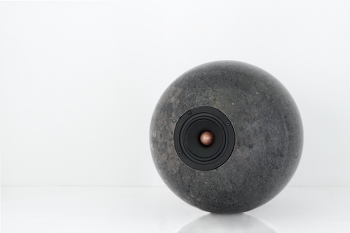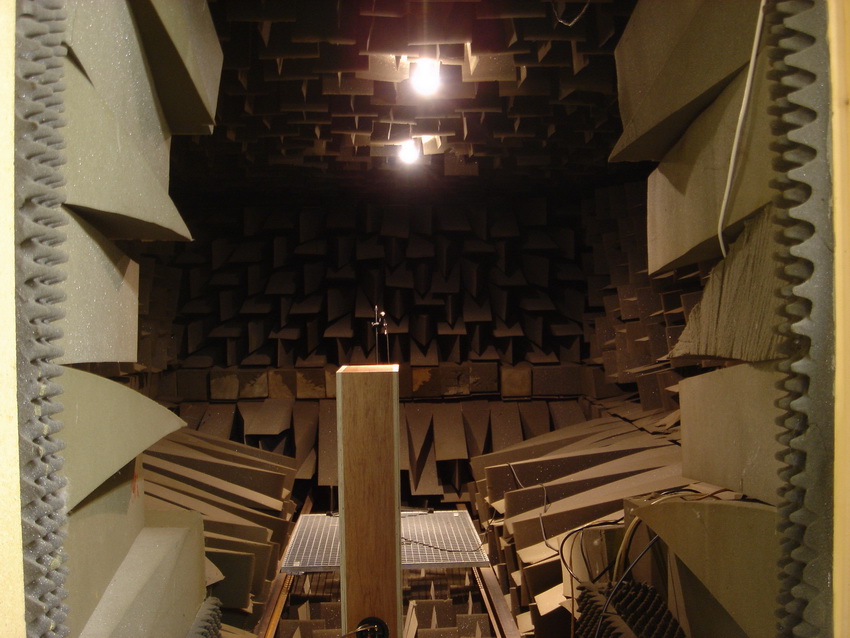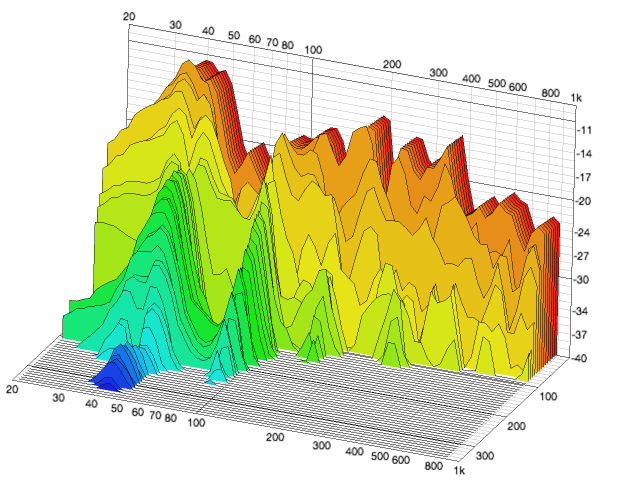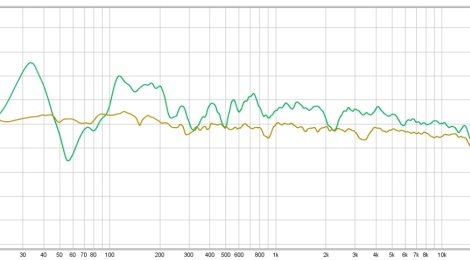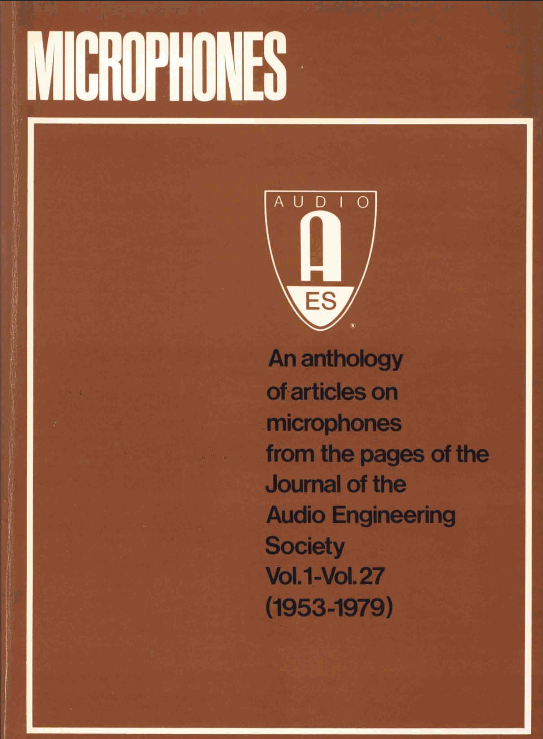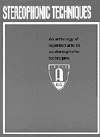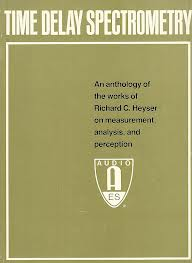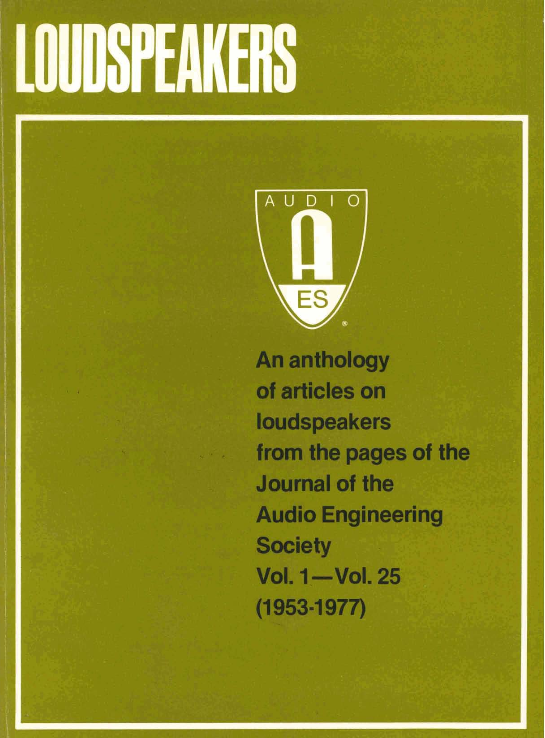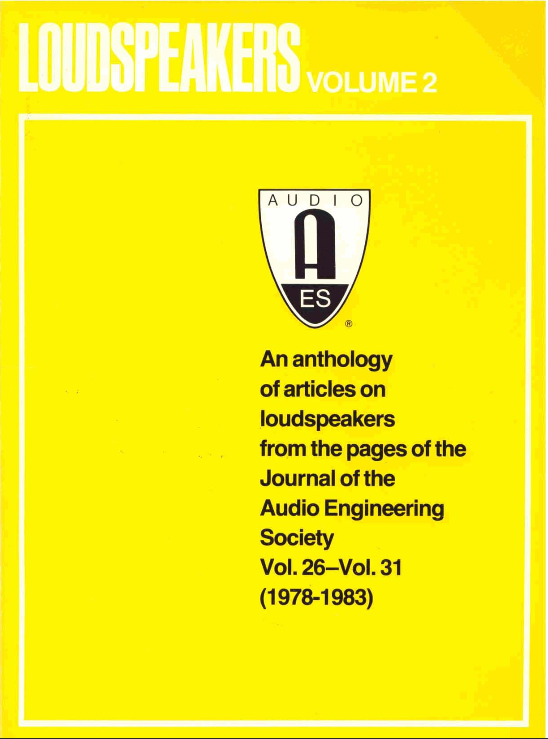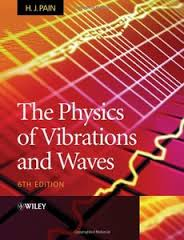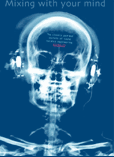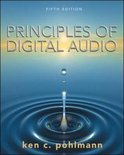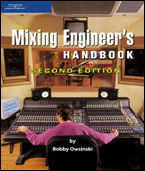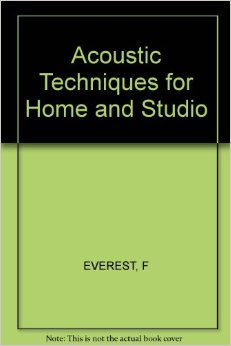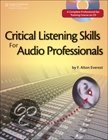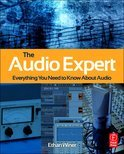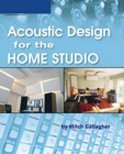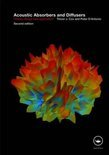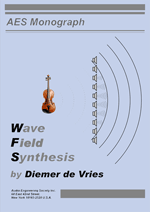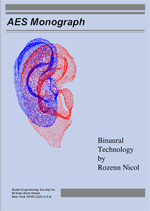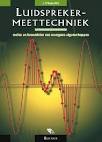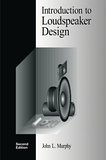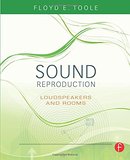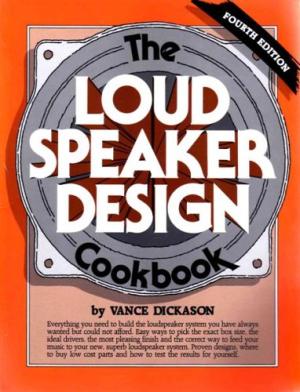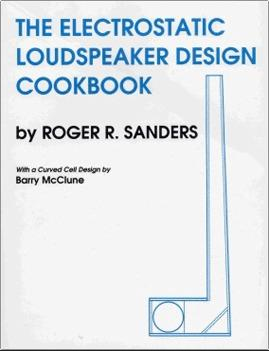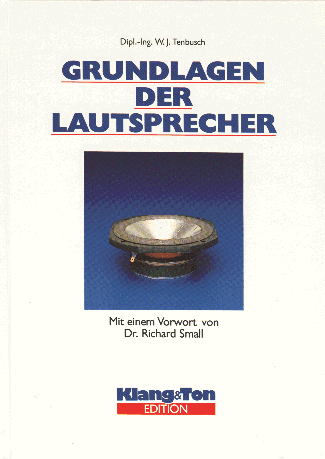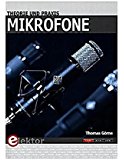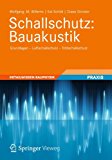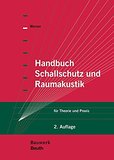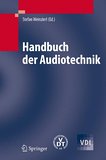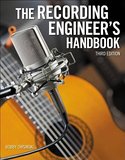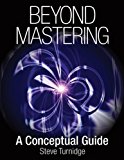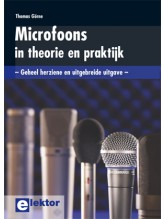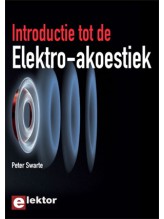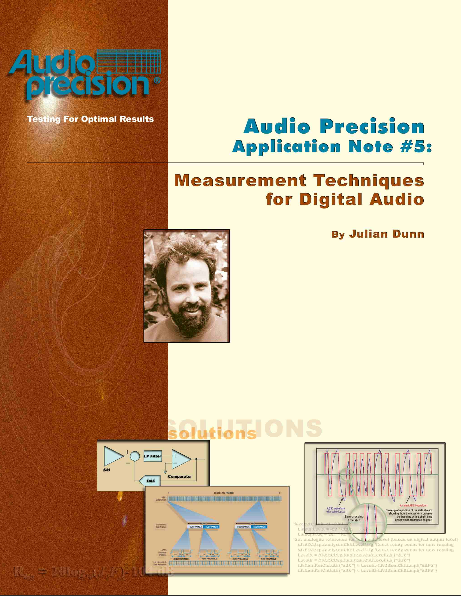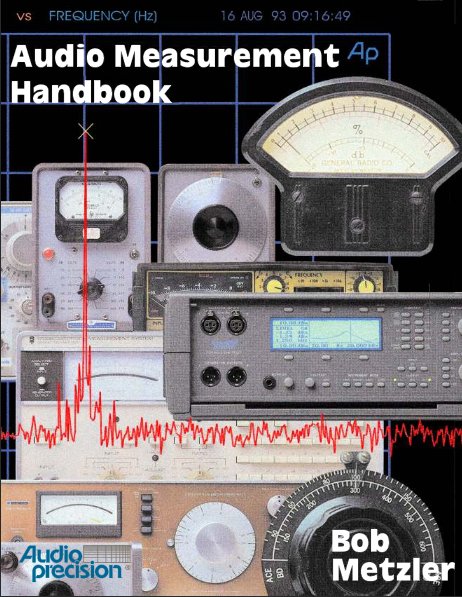Loudspeaker Design
Loudspeaker Design
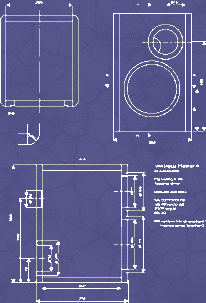
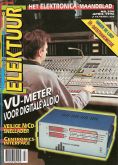
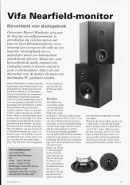
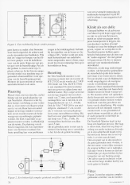
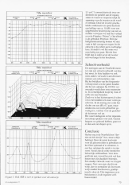
Back in the days when things got serious...
(Design published in Dutch version of Elektor: "Elektuur Luidspreker Special 11")
...De Nearfield-Monitor heeft in het hoog een haarfijne precisie. Het laag is mooi strak, maar niet erg diep en zolang een audio-technicus dit terdege in zijn achterhoofd houdt en bij het mixen de bassen niet teveel optrekt, is er niets aan de hand. "Ideaal dus voor bijvoorbeeld de audio-engineer die veelvuldig werkt in diverse, niet al te grote controleruimtes." Op het oog is de Nearfield een ""dertien uit één dozijn""-box, maar schijn bedriegt. Door de juiste kastvorm voor de gekozen units te gebruiken en het filter optimaal af te stemmen, is een box ontstaan die uniek is in zijn soort. Veelal zijn de "echte" monitoren behoorlijk kostbaar. Voor deze geldt dat niet, terwijl hij zich wel kan meten met zijn duurdere broertjes. Een staaltje vakwerk waar we U tegen zeggen.
Quote: Elektuur Special 11 (url: Speaker & Co).
Jump directly to my latest designs:
Spherical Reference Monitor Loudspeakers:
Reference Monitor Loudspeakers:
Excepteur sint occaecat cupidatat non proident, sunt in culpa qui officia deserunt mollit anim id est laborum.
For more information:
Spherical Reference Monitor Loudspeakers
The spherical shape is considered as the optimal enclosure for the one-way loudspeaker with minimal diffraction (H. F. Olson, 1957).
A full-range loudspeaker driver unit is defined as a driver which reproduces as much of the audible frequency range as possible, within the limitations imposed by the physical constraints of a specific design...
Responses of my latest prototype loudspeaker enclosure (Ø = 340 mm., 14,2 l. custom made 1-piece spherical solid Italian Granite) are measured in two different anechoic chambers (...) at 1.0 m. and 2.0 m. distance.
-
For the first experiment utilizing the (discontinued) Creative Sound Solutions FR125-SR RoHS compliant 4.5” (125mm.) full range shielded driver featuring a curvelinear paper cone, rubber surround, & copper phase plug extremely suitable for High-End & Professional use.
The flatter BL, lower distortion, low moving mass, & significant excursion provided by the XBL2 ™ motor topology, permit this speaker to perform very cleanly with a wide frequency response as well as almost unbelievable bass output for audiopurists who do not want a crossover in the signalpath of their music satisfaction!
Measurements (anechoic):
-
For the second experiment utilizing the SEAS H1600-08 FU10RB RoHS compliant 4” (100mm.) full range driver offering an extraordinary performance and sound clarity.
New Curv cone, a woven polypropylene with excellent internal damping together with perfectly matched moving parts gives a smooth, extended frequency response.
The large, open weave fabric spider reflects very little acoustic energy to the cone, and offers excellent stiffness linearity.
A stiff and stable injection moulded aluminum chassis keeps the critical components in perfect alignment. The pole piece is prolonged forwards and equipped with a deep drawn copper cap to ensure excellent linearity in the force factor and coil inductance.
Small size combined with an excellent performance makes this driver the perfect election for any application where limited space is a critical parameter.
Measurements (anechoic):
Curves show both the vertical and horizontal directivity measurements of the loudspeaker (θ = 0°), utilizing MBHO completely linear, omnidirectional reference microphone Type MBNM 550 E-L at δ = 0° (uppermost plot), 5°, 10°, 15° and 20°, 0.1 octave smoothed responses, offset 0 dB..
For more information:
Reference Monitor Loudspeakers
Responses of my latest prototypes series-filtered, time-aligned loudspeaker enclosures (25 mm. MDF, Baffle 50 mm.) for precision studio monitoring applications are measured in two different anechoic chambers (...) at 1.0 m and 2.0 m distance.
-
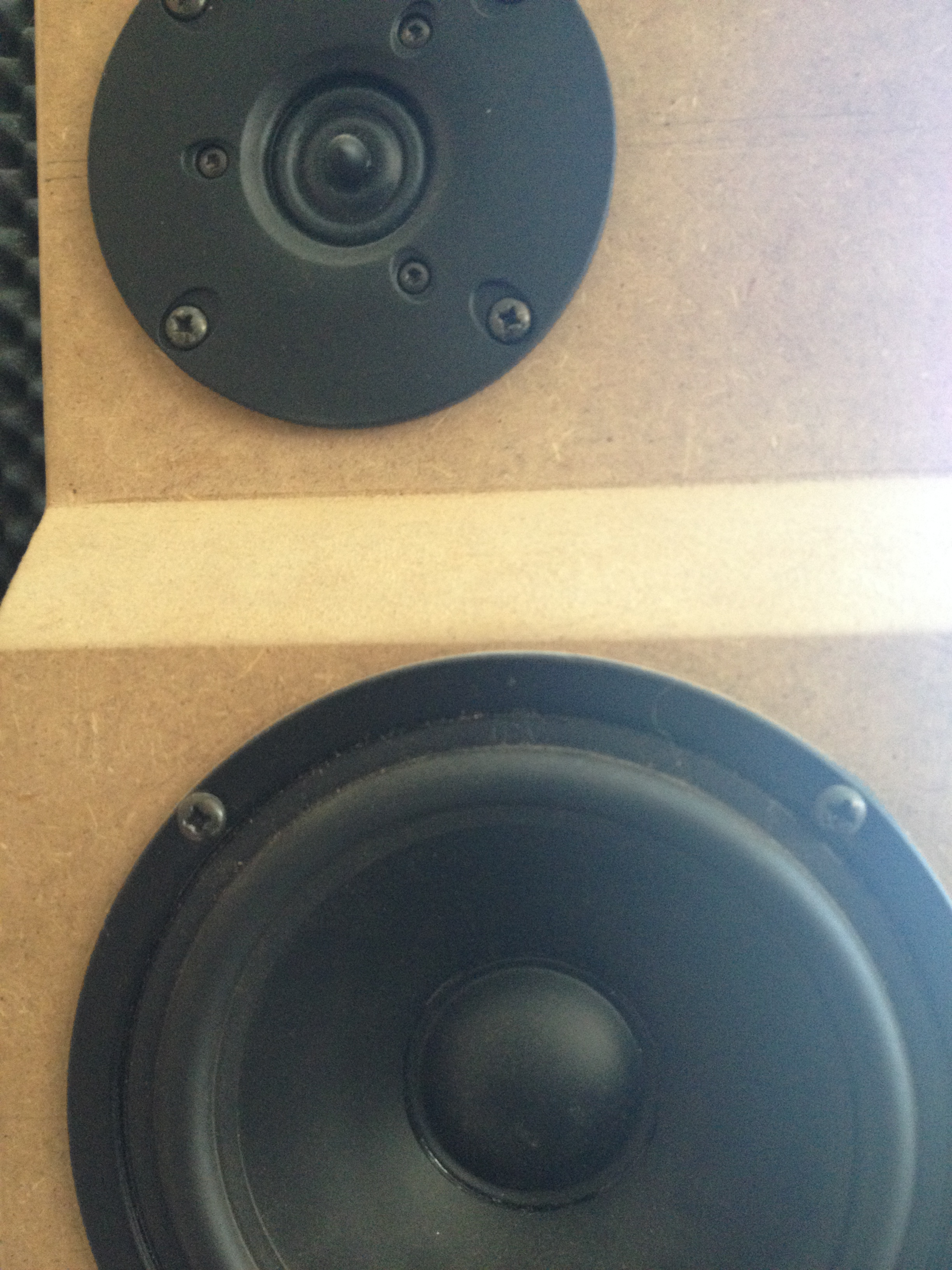
Closefield: Closed enclosure. Working Range: 50-100 cm..
Lorem ipsum dolor sit amet, consectetur adipisicing elit, sed do eiusmod tempor incididunt ut labore et dolore magna aliqua. Ut enim ad minim veniam, quis nostrud exercitation ullamco laboris nisi ut aliquip ex ea commodo consequat. Duis aute irure dolor in reprehenderit in voluptate velit esse cillum dolore eu fugiat nulla pariatur.
Measurements (anechoic):
-
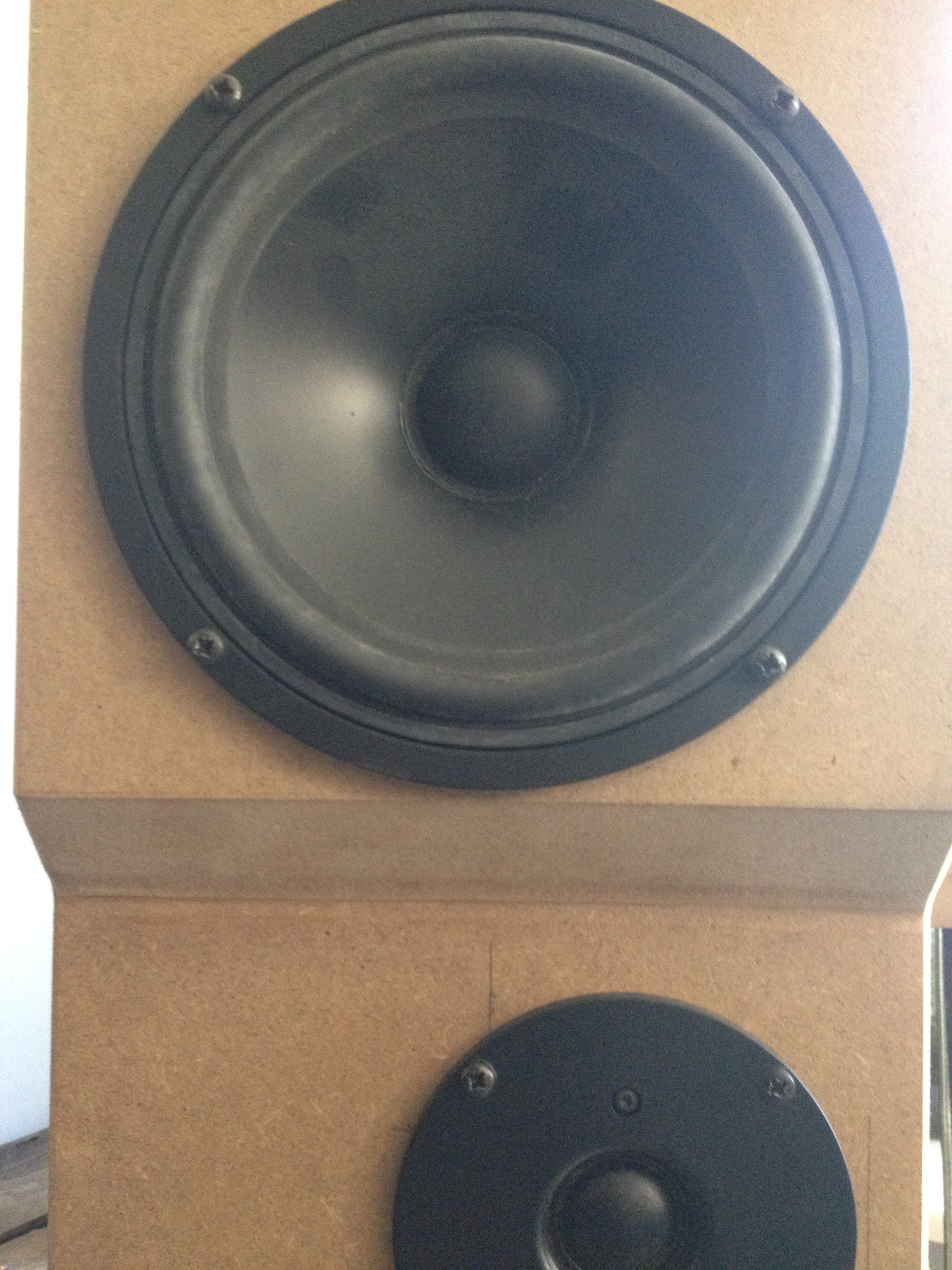
Nearfield: Closed enclosure. Working Range: 90-170 cm..
Lorem ipsum dolor sit amet, consectetur adipisicing elit, sed do eiusmod tempor incididunt ut labore et dolore magna aliqua. Ut enim ad minim veniam, quis nostrud exercitation ullamco laboris nisi ut aliquip ex ea commodo consequat. Duis aute irure dolor in reprehenderit in voluptate velit esse cillum dolore eu fugiat nulla pariatur.
Measurements (anechoic):
-

Midfield: Combining a closed nearfield enclosure & a vented bass enhancement enclosure. Working Range: 120-250 cm..
Lorem ipsum dolor sit amet, consectetur adipisicing elit, sed do eiusmod tempor incididunt ut labore et dolore magna aliqua. Ut enim ad minim veniam, quis nostrud exercitation ullamco laboris nisi ut aliquip ex ea commodo consequat. Duis aute irure dolor in reprehenderit in voluptate velit esse cillum dolore eu fugiat nulla pariatur.
Measurements "vented bass enhancement" (anechoic):
- On-axis freq.response & distorsion
- Horizontal Directivity
- Vertical Directivity
- Step Response
- Acoustic Centre
- Waterfall Plot
- Updates Soon!
Measurements "Combined" (anechoic):
-

Subwoofer (Mono/Stereo): Vented enclosure. Working Range: rooms < 80 m³..
Lorem ipsum dolor sit amet, consectetur adipisicing elit, sed do eiusmod tempor incididunt ut labore et dolore magna aliqua. Ut enim ad minim veniam, quis nostrud exercitation ullamco laboris nisi ut aliquip ex ea commodo consequat. Duis aute irure dolor in reprehenderit in voluptate velit esse cillum dolore eu fugiat nulla pariatur.
Measurements (anechoic):
Curves show both the vertical and horizontal directivity measurements of the loudspeaker (θ = 0°), utilizing MBHO completely linear, omnidirectional reference microphone Type MBNM 550 E-L at δ = 0° (uppermost plot), 5°, 10°, 15° and 20°, 0.1 octave smoothed responses, offset 0 dB.
For more information:
Acoustical Design
Referenced near field monitoring is a way to sit closer to your monitors with the idea that sitting closer to the speakers (70-220 cm. depending on room size), will reduce the sound of the room in the mix. Flooding the monitoring position with direct energy from the loudspeakers will reduce the impact from side wall reflections at the monitoring position. The more your ears hear the sound from the speakers directly, the more you hear the actual speaker as the speaker designer intended. Near field monitoring minimizes reflections from side walls..., but does not eliminate all room sound.
The widely accepted professional standard is the ITU-R BS. 775-1. The recommendation states clearly a few well-known points: the positioning of the reference listening point is at the centre of an imaginary circle having a radius between 2 m and 4 m (min. and max. radius defined in the ITU-R BS.1116–1 recommendation). Concerning positioning angles, in the horizontal plane, there should be 60 degrees between front left and right speakers, with the centre speaker in the middle. Both rear speakers should be placed within 100 to 120 degrees from the centre line. The acoustical axis of the front speakers should be approximately at the listener’s ear height, meaning 1.2 m. for the ITU.
Due to simple physics every listening room is causing acoustic distortions, which strongly degrades the tonal-, temporal- & spatial quality of sound, listening at the sweetspot.
An ideal closed acoustical space has:
- a perfectly diffuse sound field;
- evenly spaced absorption (symmetry);
- negligible single room modes;
- an exponential decay of sound vs. time (RT60);
- no background noise.
Standard room acoustical parameters are based on this ideal model.
A real closed acoustical space typically exhibits:
- a mixed sound field of direct, reflected and diffuse sound;
- unevenly spaced absorption (i.e. precence of audience);
- strong single room modes at low frequencies;
- multiple decays;
- high levels of background noise...
...unwanted artifacts which become more irratic in behaviour by a faulty loudspeaker setup.
Thus the key questions to be answered are:
- What are the key acoustic measurements?
- What different room acoustic measurement tools are there?
- How to analyze & qualify the measurements?
For more information:
DSP
Using different IIR & FIR (minimum phase/lineair phase) filter design techniques for:
- Crossover Filter (X-Over)
is a class of electronic or digital filters used in audio applications. Most individual loudspeaker drivers are incapable of covering the entire audio spectrum from low frequencies to high frequencies with acceptable relative volume and absence of distortion so most Pro Audio and Hi-Fi speaker systems use a combination of multiple loudspeaker drivers, each catering to a different frequency band. Crossovers split the audio signal into separate frequency bands that can be separately routed to loudspeakers optimized for those bands. (Tutorial)
- Room Response Correction (DRC)
is a process in the field of acoustics where digital filters designed to ameliorate unfavorable effects of a room's acoustics are applied to the input of a sound reproduction system. Modern room correction systems produce substantial improvements in the time domain and frequency domain response of the sound reproduction system. (Tutorial)
- Headphone Response Correction (Hearing Impairment)
is a process in the field of acoustics where digital filter designed for hearing impaired (i.e. audiogram-, corrective EQ-, noise canceling implementation) to ameliorate unfavorable effects of a headphone's acoustics are applied to the input of a sound reproduction system. Modern DSP correction and cancelation techniques produce substantial improvements in the time domain and frequency domain response of the sound reproduction system. (Tutorial)
For more information:
Mastering for iTunes
Typically an audio production proces consists of three stages: recording, mixing and mastering. During mastering the source material (ideally at the original bitdepth and resolution -or higher) is processed using equalization, compression, limiting and other processes. More tasks, such as editing, pre-gapping, leveling, fading in and out, noise reduction and other signal restoration and enhancement processes (tonal-, temporal- & spatial) can be applied as part of the mastering stage before online distribution or cd-replication.
As iTunes (Store) has entered the Dutch market, many technical questions arise about mastering of audio tracks for distribution via iTunes (Store). Some of the questions are answered in the official documentation and on the official site, but many aspects are not covered there. Let’s investigate...
acoustiColour
Lorem ipsum dolor sit amet, consectetur adipisicing elit, sed do eiusmod tempor incididunt ut labore et dolore magna aliqua. Ut enim ad minim veniam, quis nostrud exercitation ullamco laboris nisi ut aliquip ex ea commodo consequat. Duis aute irure dolor in reprehenderit in voluptate velit esse cillum dolore eu fugiat nulla pariatur.
Crossing borders, connecting knowledge, get inspired by art & science:
Micro Modal Modulations,
Electronics & Acoustics, Analysis & Synthesis, Music & Technology, Sound & Design, Interaction & Communication, Drama & Expression, Education & Composition,
Research & Development, Engineering & Consultancy.
For more information:
Home
(This website is currently under heavy revision!)
Welcome! Thank you for visiting the official acoustiColour website.
about
Because music is art & sound science, in 1988 acoustiColour is founded by musictechnologist (multidisciplined & certificated: electronics-, audio-, recording-, mix-, mastering engineer, composer, sound designer) and teaching musician Marcel Wardenier.
(Call +31 6 26 46 20 88 or email me).
(...who is also having problems with beliefs and much prefers to let physics do the talking! (John Watkinson on Slaying Dragons)).
acoustiColour
Crossing borders, connecting knowledge, get inspired by art & science:
Micro Modal Modulations,
Electronics & Acoustics,
Analysis & Synthesis,
Music & Technology,
Sound & Design,
Interaction & Communication,
Drama & Expression,
Education & Composition,
Research & Development,
Engineering & Consultancy.
Services
Topics I can help you with!
Music Technology, Audio Technology, Sound Design, R&D, Education.
- Composition
- Arrangement
- Sounddesign
- Production
- Music
- Design
- Development
- Electronic Music
- Computer Music
- Music Theory
- Electronic Music Theory
- Computer Music Theory
- Electronic Music History
- Computer Music History
- Education
- (Audio) Measurement
- (Acoustic) Measurement
- Calibration
- Restoration
- Recording
- Balancing
- Tuning
- Mixing
- Mastering
- Modification
- HE-AAC/AAC+ Transcoding (MFiT)
- Master Quality Authenticated Transcoding (MQA)
- EBU R 128/LuFS Transcoding
- DSP
- DRC
- DIY
- MIDI
- DAW
- Analysis
- Synthesis
- Sampling+Synthesis
- Arduino
- Raspbery Pi
- (Project) Studio
- Home theatre
- Listening Room
- Loudspeaker
- Instrument
- Acoustics
- Electronics
- Accessibility
- Security
- Workshops
- 1-2-1 tuition
- Demonstrations
- Tutorials
- Etc.
Back to Menu.
For more information:
Resources
Stuff I use daily and highly recommend!
Tools
Calculators:
- SRC (Alexey Lukin, Infinite Wave)
- Room Acoustics (Linkwitz)
- Room Acoustics (Winer)
- Room Acoustics (HOFA)
- Room Acoustics (Hunecke)
- Roommodes (Gold)
- Roommodes (Winer)
- Roommodes (Wieczorek)
- Roommodes (MH)
- RT60 (Wieczorek)
- RT60 (MH)
- Placement Options (NoAudiophile)
- Golden Triangle (Cardas)
- Golden Placement (Cardas)
- Absorbers & Diffusers (MH)
- Resonators (Helmholtz)
- Diffusors (Schrödinger)
Measuring Hardware:
- WC CC1 Master Word Clock
- I/O RME FF 400 (2)
- I/O RME HDSP 9632
- Mic MBHO MBNM 550 EL
- Mic (mod.) ECM8000L
- Mic MiniDSP UMIK-1
- Mic MicW i436
- Amp Hypex NC400 monobloc
- Amp MiniDSP PWR-16
- Amp Quad 303 MK3 monobloc
Measuring Software:
- Aliki (Adriaensen)
- ARTA (Mateljan)
- Baudline (SigBlips)
- DIGICheck (RME)
- Friture (Lecomte)
- Fuzzmeasure (SMUG)
- IQ-Analyser (HOFA)
- LIMP (Mateljan)
- MATLAB (MathWorks)
- REW (Mulcahy)
- RMAA (RightMark)
- STEPS (Mateljan)
Room Correction:
- Align2 (Ohl)
- BruteFIR (Torger)
- DRC (Sbragion)
- DRC Designer (Jordan)
- DSP (Barbour)
- Equalizer APO (Thedering)
- PORC (Bank)
- rePhase (Drugeon)
Miscellaneous Software:
- ARDOUR (Community)
- AU Lab (Apple)
- CALF (Community)
- Debian (Community)
- JACK (Community)
- KXStudio (Community)
- MIXBUS (Harrison)
- Sonic Pi (Sam Aaron, Community)
- SOX (Bagwell)
- UbuntuStudio (Community)
Back to Menu.
Project Software:
Inspired by some of the most groundbreaking innovative audio pioneers/gurus I created bootable CD/USB/VM images with clean builds of a hardened Debian Server for my experimental dedicated realtime DSP Low-Latency JACK Audio Server Applications.
Functioning 99.99% stable in my audiolab 24/7. Disclaimer: as is (!), because this is work in progress.. Please: don't forget to check out the tutorials & RTFM's!!
(...I simply love the power of Open Source Software and Debian installed on a nowadays old useless-, but relatively silent Mac Mini 2,1+. Easily 'build' your own DSP power house running 16/24 bits 44.1/48/(96*) kHz., syncing on WC via S/PDIF signal using one of these instant functioning dsp bootable disk images:).
Back to Menu.
Books:
Back to Menu.
Magazines:
Back to Menu.
Links:
- Bob Katz Mastering
- Linkwitz Lab
- George Massenburger Labs
- Bruno Putzeys
- Ethan Winer
- Linuxaudio.org
- flac.org
- Kokkini Zita
- NwAvGuy
- EBU Loudness (PLOUD)
- EBU R128
- EBU R128s1
- EBU R128 tech 3341
- EBU R128 tech 3342
- EBU R128 tech 3343
- EBU R128 tech 3344
- On the way to Loudness Nirvana - with EBU R 128
- Loudness - don't forget the distribution chain!
- Speakerland
- Speaker & Co
Back to Menu.
Journals:
Back to Menu.
Institutes:
Back to Menu.
Colophon
Credits & Rights
All design and content are ©1972-2016 by: Marcel Wardenier / acoustiColour / Wardenier Web Work, except where otherwise noted. Link to it all you want, but please don't take it and publish it elsewhere. I will consider writing something similar for your site, if you ask. I might even do it for free, under the right circumstances... but ya gotta ask!
The content of e-mail posted to me via this site remains the property of its original author(s).
Privacy
The content of e-mail posted to me via this site will be kept in strictest confidence, except in (the presently unlikely) cases where vital public or personal interest requires otherwise. In other words, don't confess to me here that you're an uncaught felon or be otherwise stupid unless you want to take your chances, okay?
I reserve the right to archive or delete as I see fit message traffic and logfiles relating to this site.
This policy is subject to change without notice.
Accessibility
At the heart of the Debian's philosophy (including Debian based distributions like Ubuntu and Linux Mint) is the belief that computing is for everyone, whatever your circumstances (or disability). Debian/Ubuntu (Linux Mint) is one of the most accessible operating systems and is fully translated into 25 languages with more being added all the time.


